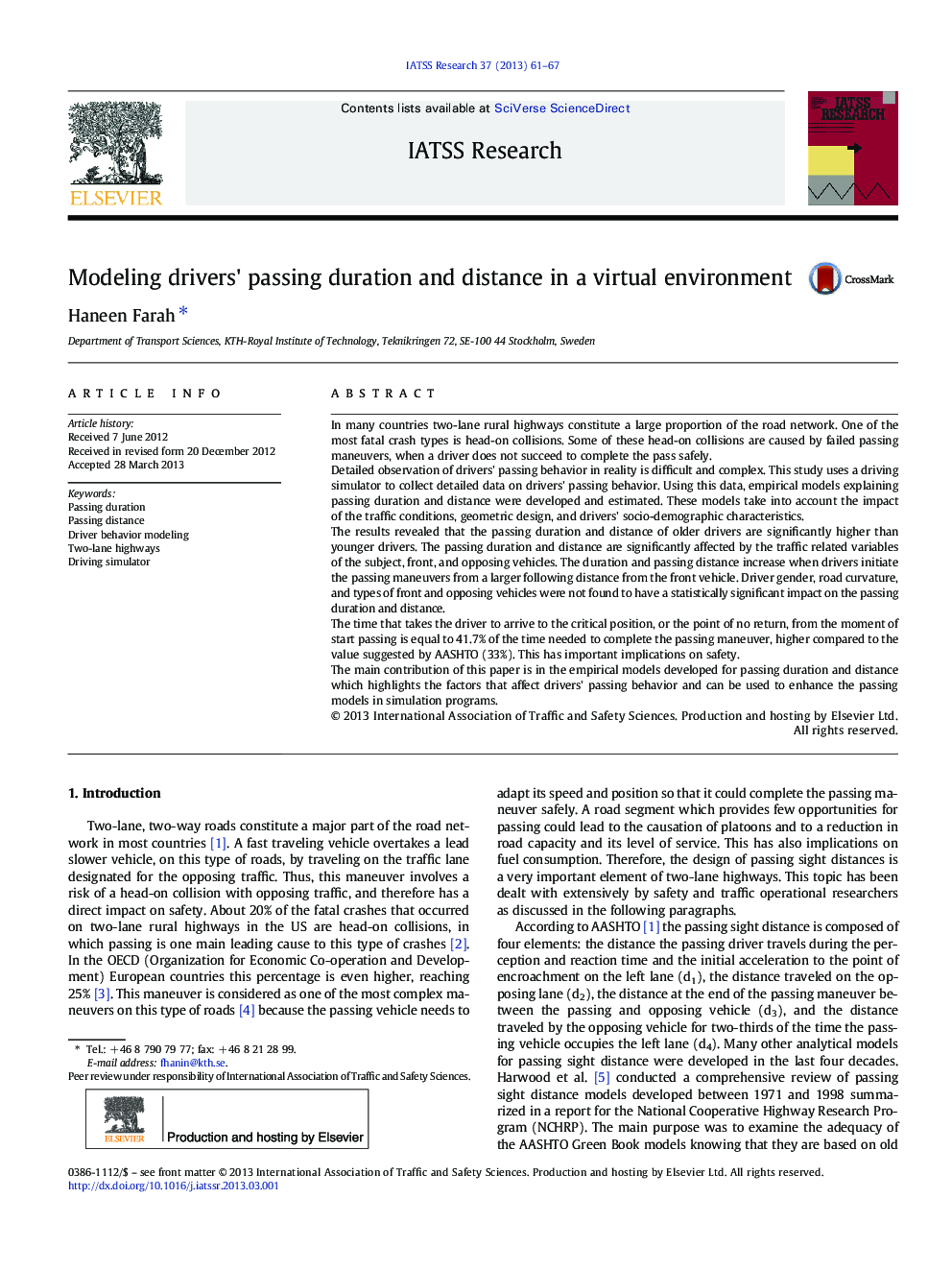| کد مقاله | کد نشریه | سال انتشار | مقاله انگلیسی | نسخه تمام متن |
|---|---|---|---|---|
| 1104652 | 954142 | 2013 | 7 صفحه PDF | دانلود رایگان |
• Failed passing maneuvers can lead to head-on collisions on two-lane rural highways.
• Data on drivers’ passing behavior was collected using a driving simulator.
• Empirical models of passing duration and distance were developed and estimated.
• The models consider the impact of traffic, geometric, and drivers’ characteristics.
In many countries two-lane rural highways constitute a large proportion of the road network. One of the most fatal crash types is head-on collisions. Some of these head-on collisions are caused by failed passing maneuvers, when a driver does not succeed to complete the pass safely.Detailed observation of drivers' passing behavior in reality is difficult and complex. This study uses a driving simulator to collect detailed data on drivers' passing behavior. Using this data, empirical models explaining passing duration and distance were developed and estimated. These models take into account the impact of the traffic conditions, geometric design, and drivers' socio-demographic characteristics.The results revealed that the passing duration and distance of older drivers are significantly higher than younger drivers. The passing duration and distance are significantly affected by the traffic related variables of the subject, front, and opposing vehicles. The duration and passing distance increase when drivers initiate the passing maneuvers from a larger following distance from the front vehicle. Driver gender, road curvature, and types of front and opposing vehicles were not found to have a statistically significant impact on the passing duration and distance.The time that takes the driver to arrive to the critical position, or the point of no return, from the moment of start passing is equal to 41.7% of the time needed to complete the passing maneuver, higher compared to the value suggested by AASHTO (33%). This has important implications on safety.The main contribution of this paper is in the empirical models developed for passing duration and distance which highlights the factors that affect drivers' passing behavior and can be used to enhance the passing models in simulation programs.
Journal: IATSS Research - Volume 37, Issue 1, July 2013, Pages 61–67
